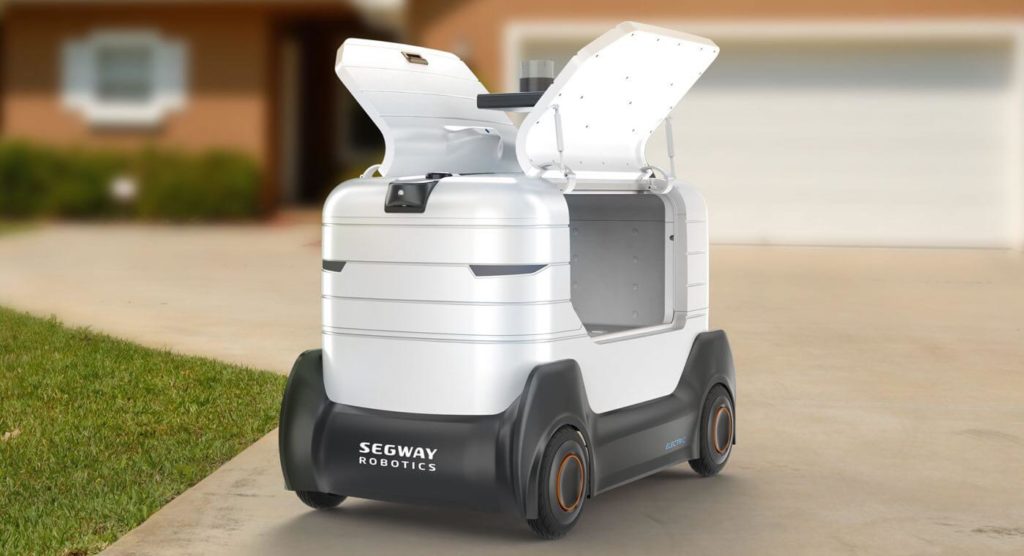The COVID-19 pandemic accelerated demand for food delivery to unprecedented levels – and that elevated consumer desire for fast, fresh food at their doorstep isn’t going away any time soon.
That means that restaurants, groceries and other foodservice operations need solutions to help them keep pace with that demand. If they can’t, they’ll fall behind in an on-the-go and ever-shifting world.
How Robotics Provide an Efficient, Alternative Solution for Food Delivery
Turning to robotic food delivery and automation is the answer for foodservice organizations looking for ways to effectively scale operations and keep pace with the desires of modern consumers.
In fact, many organizations are already using advanced innovations surrounding contactless robotic delivery to minimize touchpoints and deliver food quickly and efficiently.
For example:
- Georgia Southern University has partnered with Starship Technologies to leverage 20 autonomous delivery robots on its campus that can bring food from on-campus dining spots to designated pickup zones.
- Kiwibot is partnering with Ordermark in San Jose and Berkeley, California, with expansion to other cities in the works, to provide last-mile delivery for local restaurants.
- Refraction AI recently raised more than $4 million in seed funding to continue working toward implementation of its autonomous delivery robots, which can use bike lanes.
- DoorDash acquired Chowbotics, a startup best known for Sally, an automated, vending machine-like robot that can actually produce certain meals on the spot.
- Nuro has launched autonomous pizza delivery in Houston as an area Domino’s now sees its pizza delivered locally by a Nuro R2.
Robot delivery, combined with robotics with AI, is the future of food delivery – though there are still challenges to overcome.
Ensuring Robot Delivery Companies Can Deliver Safe Robotic Solutions
For all their promise, robotic delivery solutions still face some significant roadblocks and challenges before widespread adoption can occur.
These include:
- Pedestrian Safety:
Solutions will need to be safe for pedestrians each and every time and have robust positioning and collision avoidance solutions to ensure accidents don’t occur. - Local Community Impact:
Local governments – and sometimes even state and federal bodies – are hesitant to adopt widespread robotic delivery. With many technologies largely unproven, these decision-makers are concerned about safety, regulations for when and where these solutions can operate, and more, and all of these wrinkles will need to be ironed out prior to larger rollouts. - Expense and Complexity:
Even the safest and most efficient solution still represents a significant investment in both the robots, themselves, and in the infrastructure to support their adoption. Adoption could also prove highly complex, particularly in some of the world’s most populous regions.
Segway Robotics Simplifying Advanced Robotics
Segway Robotics is constantly working to provide robust, reliable and straightforward mobility platforms that serve a variety of applications.
Whether you’re looking for a platform for your robotics application, a next-level robotic assistant or something even more ambitious, our goal is to take the performance and engineering prowess demonstrated in the Segway® Personal Transporter and make it available in a durable package for robotics applications.
That means Segway Robotics will be on the front lines of every advance in robotic food delivery and beyond.
To learn more, visit https://robotics.segway.com/
For media inquiries, contact:
marketing@robotics.segway.com
